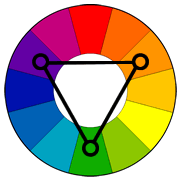Dan Mondloch 란 화가가 수채화에 대해서 쓴 흥미 있는 글이 있어 옮긴다.
(번역은 아직 어설프지만 구글 번역 그대로 , 원문은 맨 뒤에 )

“수채화에 대한 자신의 접근 방식을 설명해 달라는 요청을 받은
John Singer Sargent는 '긴급 상황에 최선을 다하세요!'라고 말한 적이 있습니다.
수채화로 그림을 그리려면 매체를 적절하게 다루는 것과 정확성 사이에서
춤을 추는 것이 분명 필요합니다. 관련된 스릴은 최종 그림에서 나타나며
이것이 작품을 매력적으로 만드는 이유입니다.”라고 Dan Mondloch는 말합니다.

“저희 아버지는 수채화 화가이기 때문에 저는 매체와 함께 자랐고
항상 수채화에 애착을 갖고 있지만 야외에서 아크릴과 유화로 그림을 그리기도
합니다. 저는 수채화 팔레트에도 흰색 구아슈를 유지하는데, 일반 수채화
물감과 섞으면 본질적으로 구아슈가 됩니다. 각 매체는 해당 분야에서
장점과 장점을 갖고 있으며, 저는 이러한 고유한 특성을 활용하여 주어진
상황에서 어떤 매체를 사용할지 결정합니다. 수채화 재료가 더 이상 수명에 대한
우려를 제기하지 않는다는 분명한 증거로 인해 수집가들은
실제로 내 유화보다 내 수채화 그림을 plein air 이벤트에서 더 많이 구매합니다.

“장대한 풍경, 미묘한 색상 뉘앙스가 있는 장면, 3~4시간 동안 안정적인
조명 및 날씨 조건에서 대기 원근감을 만들기 위해 저는 유화를 사용하는
경향이 있습니다. 역광이 있는 장면이나 강한 그림자가 있는 햇빛이 비치는
건물의 경우 수채화를 선호합니다. 저는 섀도우 워시의 투명성과 그 밑에 있는
모양을 만드는 레이어를 그대로 드러내면서 활기찬 브러시 스트로크로
조명 효과와 구성을 통합할 수 있는 방식을 좋아합니다.
훌륭하고 세련된 유화에는 매력이 있지만 대부분의 경우 주어진 장면에 대한
빠르고 자연스러운 몸짓 반응, 즉 진실성과 강한 감정적 요소가 있는
그림에 마음이 흔들립니다. 수채화는 매체의 특성상 이러한 특성을 본질적으로 구현합니다.



“유화 친구들이 수채화를 해보고 싶다는 이야기를 자주 해요.
투명한 베일의 색상에 대한 매력이 있고, 색상 축적의 아름다운 레이어링에
대한 흥미가 있으며, 본질적인 단순성에 대한 욕구에 대한 부인할 수 없는
매력이 있습니다. 게다가 예측할 수 없다는 스릴도 더해졌습니다.
그것은 약간 도박꾼의 매체입니다.”

“Asked to describe his approach to watercolors, John Singer Sargent once said, ‘Make the best of an emergency!’ Painting with watercolor definitely requires a dance between accuracy and a loose handling of the medium. The thrill involved comes across in the final painting, and it’s what makes the work so appealing,” says Dan Mondloch.
“My dad is a watercolor painter so I grew up with the medium and will always have a soft spot for it, but I also paint outdoors in acrylic and oil. I keep white gouache on my watercolor palette as well, and when mixed with regular watercolor paints they essentially become gouache too. Each medium has its virtues and advantages in the field, and I use those unique characteristics to decide which one I will use in a given situation. With clear evidence that watercolor materials no longer pose concerns over longevity, collectors actually now buy more of my watercolor paintings at plein air events than my oils.
“To create atmospheric perspective in grand vistas, scenes with subtle color nuances, or lighting and weather conditions that are stable for 3- to 4-hour time periods, I tend to reach for oil paint. When it comes to backlit scenes or sunlit buildings with strong sweeping shadows, I prefer watercolor. I love the transparency of a shadow wash, and the the way I can unify the light effect and composition with energetic brushstrokes while still revealing the shape-making layers underneath. A good refined oil painting has its appeal, but most often I am swayed by a quick, spontaneous, gestural response to a given scene — something with a truth and a strong emotional component. Due to the nature of the medium, watercolors embody those qualities inherently.
“Oil painting friends of mine often talk about their desire to try watercolor. There is an allure to the transparent veils of color, an intrigue to the beautiful layering of color accumulation, and an undeniable charm to its intrinsic need for simplicity. Plus, it has the added thrill of unpredictability; it’s a bit of a gambler’s medium.”
'그림공부' 카테고리의 다른 글
| ( 그림공부 ) 천연모와 인조모 붓의 비교 (3) | 2024.06.19 |
|---|---|
| ( 그림공부 ) How to Keep Your Watercolors Fresh and Loose (0) | 2024.06.07 |
| ( 그림 공부 ) The Value of Value Sketches (0) | 2024.05.10 |
| ( 그림공부) A Painting Exercise That’s Almost Like Therapy (0) | 2024.05.09 |
| ( 그림공부 ) drawing에 관한 좋은 강의 하나 (2) | 2024.04.09 |




